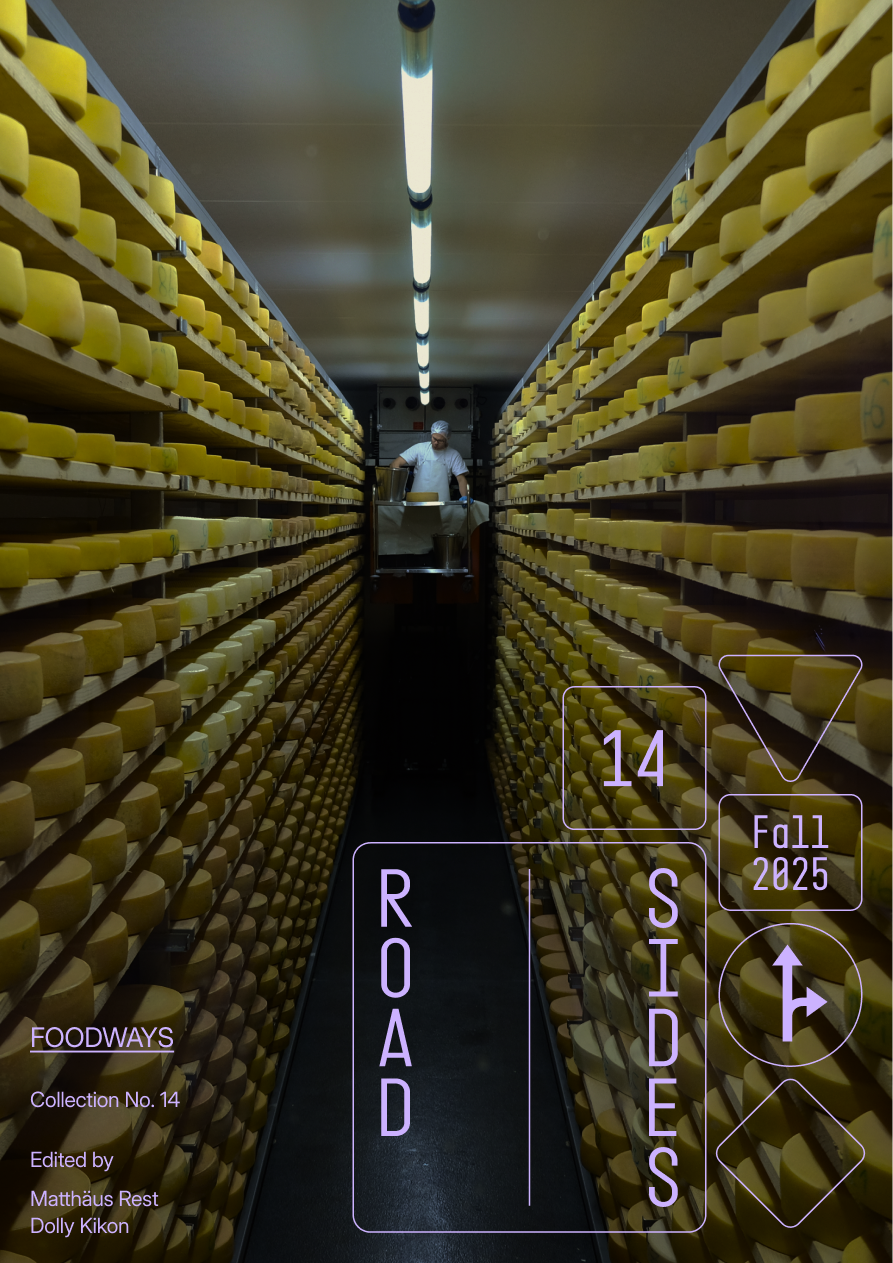
The movement of foods as commodities and cultural artefacts rests on infrastructure as a form of engagement, care, and as an ongoing process. In this issue of Roadsides, we think through such cosmologies alongside the infrastructure that moves food around the world, and ask: how do foodways and their socio-cultural-cosmological scaffoldings condition each other?
Food and infrastructure interact in multiple ways. Industrialized food is dependent on modern infrastructure for its production, processing and distribution. On its way from producer to consumer, it is often transformed beyond recognition, and it moves on a global scale. Bart Penders and colleagues (2014) use the difference between catching a fish and buying fish fingers at your neighborhood supermarket to drive home this point. Food often undergoes a complete deconstruction and reconstitution before it arrives in our refrigerators in a form that seems natural and straight from the farm. In a documentary film Das System Milch (2017), Aart Jan van Triest, head of marketing at the Dutch multinational dairy cooperative FrieslandCampina, proudly proclaims “We are from grass to glass,” and continues by comparing his company to a refinery, because a dairy plant transforms a single raw material into a vast array of products that “magically come out.” Where the analogy between oil and food breaks down is the fact that many foodstuffs spoil quickly. This time sensitivity makes the relations between food and infrastructure particularly complicated and producers such as dairy farmers dependent on the regular pick-up of their output.
Food and infrastructure invite us to dwell on the circulation of goods and their attendant power networks. In resource frontiers around the world, existing infrastructure that allows the movement of comestibles such as tea and cash crops are facilitated by militarized structures of power. Tracing the nexus between market, capital and violence, we look at the way infrastructure both delivers and distracts from our knowledge of food production. For instance, historian Jayeeta Sharma (2011) draws attention to the instrumentalized violence of railroads that delivered tea from the frontiers of South Asia to ports like Kolkata and London. Non-industrialized forms of food production, on the other hand, rely on very localized materials to engineer the transformation of vegetables, meat and fish. Artisanal practices of curing, fermentation and pickle making expand the notion of infrastructure to include social and cultural relationships and practices.
Our interests in this issue go beyond understandings of infrastructure simply as things that move other things. We invite contributions that explore, but are not limited to, the following questions:
Das System Milch. 2017. Directed by Andreas Pichler, produced by Christian Drewing.
Penders, Bart, David Schleifer, Xaq Frohlich and Mikko Jauho. 2014. “Preface: Food Infrastructures.” Limn 4. https://limn.press/article/preface-food-infrastructures/
Sharma, Jayeeta. 2011. Empire’s Garden: Assam and the Making of India. Durham, NC: Duke University Press.